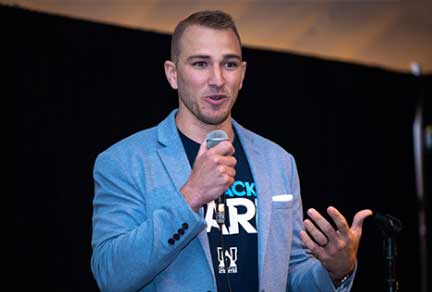A patient-centric approach to managing clinical trial complexity
The average length of a clinical study cycle is on the rise and has been for decades. Look at any five-year period: cycles are seven to 10 percent longer than in the five years immediately prior.
That’s according to Ken Getz, director of the Tufts Center for the Study of Drug Development (Tufts CSDD). When we had the opportunity to co-present at DIA 2021, Getz offered insights into three factors driving up average study duration: executional complexity, hyper-customization, and operating fragmentation.
Let’s look first at execution. Tufts CSDD found that on average from 2005 to 2020:
· Total sites per study grew from 40 to 104.
· Total procedures per study more than doubled.
· Total endpoints per study tripled.[1]
Perhaps most notably, total data points per study have increased sevenfold — up to 3.56 million per phase 3 protocol. And that’s an average. Some trials collect endpoints twice that number.[2]
We’re also seeing hyper-customization in trials, with data coming in from a diverse and steadily expanding range of sources. Getz expects a major increase over the next three years in the use of remote or virtual data collection solutions. This includes eSource data and EMRs, as well as data from smart phones and wearable devices, meaning that patients are increasingly directing the collection of their own data.
Add to complexity and customization the challenge of fragmentation. From 2000 to 2020 (projected), global R&D spending nearly tripled, with allocations for CROs and tech vendors seeing a significant increase. Numerous organizations support this growing development activity: approximately 4,200 sponsors, 3,300 CROs, 1,600 technology service providers, and 38,000 investigative sites. And these organizations must find ways to coordinate and integrate — which happens with varying degrees of success.
Complexity and customization aren’t inherently negative. With more sites, we can reach more patients. And more data points from a wider range of sources will lead to greater insights. But these conditions, along with fragmentation, certainly create challenges for sponsors, CROs, and their partners.
So how do we respond? It’s nearly impossible to reduce any of these factors. Complexity isn’t going anywhere, data sources are only increasing, and as research expands, so does the number of organizations that support it, which too easily leads to fragmentation.
Instead of reducing factors, let’s make better ways to manage them.
Within our own organizations, CROs and sponsors are efficient and rigorous. But much of our success depends on outside situations. Can sites recruit and retain patients? Will patients comply with protocols? Do technology providers offer and support the solutions we need?
If we find ways to apply internal standards and process controls to our external environment, CROs and sponsors will work more efficiently and more fully meet the needs of patients.
One place to start: Rather than running individual projects, let’s build comprehensive programs of studies that operate in consistent, patient-focused ways. At Parexel, we’re doing this through an operational delivery platform, which creates global networks of sites and partners dedicated to single therapuetic areas. Functioning as one team, each network adopts a shared operating agreement, creates common KPIs, and collaboratively supports protocol development.
By using data available to us we also have the tools and expertise to create in-depth patient insights and patient personas, noting cultural, behavioral, and logistical challenges. By bringing this together with data specific to sites’ geographic region and clinical emphasis we are able to localize and customize patient engagement programs, which could include targeted patient materials, diversity and equity mapping, and outreach to local advocacy groups and social communities.
Within these specialty-specific networks, teams can also create technology stacks that fit their needs, choosing the best solutions for the studies they conduct. For example, consider a pediatric gene therapy study — a complex trial in which patients might spend months with their care teams. In this scenario, trial staff would need a consent tool with excellent video and animation capabilities and comprehension testing. But given the study’s level of in-person interaction, remote consent capabilities would be less important.
A study for a chronic ambulatory condition, however, would have different considerations. Because patients would have a less intense relationship with their study site, a tool with strong remote capabilities would be critical — but because the study would be relatively straightforward, video and animation wouldn’t be necessary.
By selecting its own go-to technology stack, each network ensures consistency for users. Users become familiar and comfortable with the tools, suppliers can offer continuous support, and study startup happens faster because the site selection, patient recruitment and engagement programs and tech platforms are already in place.
In clinical research, trial complexity threatens efficiency and progress. And while we can’t reduce complexity, we can create methods of managing it. Parexel has a patient-centric approach, and we believe that patient interests must be at the core of any successful effort. By optimizing the patient experience, sponsors and CROs improve overall patient engagement. This leads to faster recruitment and improved retention. Most importantly, it’s a solution that creates a higher quality experience — for patients, their care providers, and the entire clinical trial team.
[1] Tufts Center for the Study of Drug Development 2021 survey.
[2] Tufts Center for the Study of Drug Development, 2021 survey.
Related Insights
Report
New Medicines, Novel Insights: Advancing rare disease drug development
May 22, 2023
Video
Part 2: Risk-based Quality Management Video (RBQM) Series
Nov 11, 2021
Report
New Medicines, Novel Insights: Accelerating development of cell and gene therapies
May 22, 2023
Blog
Including patients in DCT design
Sep 13, 2022
Article
Australia: Infrastructure and Innovations for Clinical Trials
Aug 28, 2023
Report
New Medicines, Novel Insights: Achieving patient-guided drug development
Oct 30, 2023
Blog
Adapting the validation process for PROs for rare diseases and other diseases with large unmet need and/or rapid progression
Apr 23, 2024
Blog
Decentralized Trials: Considerations for Building a New Patient-Centric Model
May 13, 2021
Article
Decentralized clinical trials - A more patient-centric approach
May 10, 2021
Blog
Breaking through complex regulations and science speak – thinking “patients first” in lay language summary development
Jun 22, 2021
Blog
End-to-end risk management: Getting the most from your program
Apr 4, 2022
Article
Regulatory, clinical and logistics challenges of ATMPs in clinical research
Apr 22, 2021
Related Insights
Report
New Medicines, Novel Insights: Advancing rare disease drug development
May 22, 2023
Video
Part 2: Risk-based Quality Management Video (RBQM) Series
Nov 11, 2021
Report
New Medicines, Novel Insights: Accelerating development of cell and gene therapies
May 22, 2023
Blog
Including patients in DCT design
Sep 13, 2022
Article
Australia: Infrastructure and Innovations for Clinical Trials
Aug 28, 2023
Report
New Medicines, Novel Insights: Achieving patient-guided drug development
Oct 30, 2023
Blog
Adapting the validation process for PROs for rare diseases and other diseases with large unmet need and/or rapid progression
Apr 23, 2024
Blog
Decentralized Trials: Considerations for Building a New Patient-Centric Model
May 13, 2021
Article
Decentralized clinical trials - A more patient-centric approach
May 10, 2021
Blog
Breaking through complex regulations and science speak – thinking “patients first” in lay language summary development
Jun 22, 2021
Blog
End-to-end risk management: Getting the most from your program
Apr 4, 2022
Article
Regulatory, clinical and logistics challenges of ATMPs in clinical research
Apr 22, 2021



